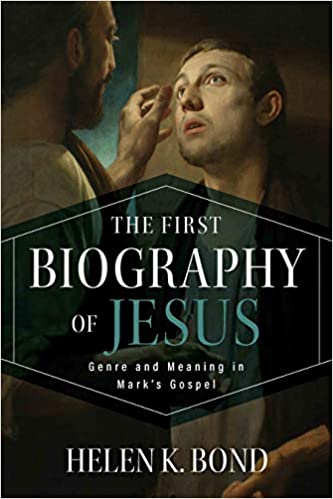BEN: I am one of those utterly unconvinced that Mark 16.8 was the original ending of Mark’s Gospel. ‘Ephobounto gar’ certainly doesn’t work as the ending of a book, or even a normal Greek paragraph. And to judge from the 3 different endings added to the text in the 2nd-3rd century, early Christians who knew about ancient biographies didn’t think so either. What sort of evangelist would want to end the story of Jesus with fright and flight of disciples rather than faith? To me at least calling Mk. 16.8 the ending seems all too modern. It might work for a modern telling of a person’s life, but ancient biographies normally had at least some more positive post-mortem reflections after the account of the hero’s death. More promising to me is the suggestion that since Matthew so carefully follows Mark, we see an augmented (by the story of guards at the tomb) version of Mark’s original ending which had an appearance to the women (Mt. 28.9-10) followed by a going forth to Galilee and an appearance there to others, including Peter. Why do you think this suggestion is less probable than the abrupt ending suggestion? The so-called parallel with the beginning of Mark doesn’t work, since Mark begins with a clear statement of who Jesus is.
HELEN:
Yes, this is such an interesting question and I also struggle with whether an open ending is too modern. But I do think that this mysterious lack of closure fits well with the rest of the gospel, where there are never any easy answers or even reassurances. The angelic figure has been quite clear that Jesus has been raised from the dead (by God), but still Jesus’ first disciples are uncertain and fearful. The (twice repeated) promise that Jesus will go before them to Galilee isn’t a promised appearance in my view (and if so, it’s odd that Lk and Jn 20 don’t include it), but rather a call to start all over again. ‘Galilee’ would then be symbolic of the place where it all started, and followers would be urged to start their discipleship again, now in the full knowledge of Jesus’ life and death. My guess is that Matthew wanted a more satisfactory ending and so supplied the promised appearance, ie that he made a symbolic calling into a literal event. His account is so brief it looks to me like something that the evangelist has supplied himself, rather than a lost ending of Mark. I did compare the endings of quite a few biographies with that of Mark, and while very few are quite as abrupt as the gospel, most tend to be quite brief, usually rounding things off with the ancient equivalent of ‘And they all lived happily ever after’.
BEN: On p. 165 you suggest that the reason for the lack of a description of Jesus’ appearance, age etc. is to make him more approachable as a figure to be imitated by his disciples. I think there is something to this. Mimesis was important in such ancient biographers of folk like Jesus or the philosophers. Can you say some more about this and why it is important?
HELEN:
This was really just a half-formed idea that I threw out there, so I’m glad that you think there may be something in it. We talked earlier about character in ancient bioi and how it tended to be flat so that audiences could extract the virtues of the hero and apply them to their own life.
That makes a lot of sense to me – the less idiosyncratic a character is, the more we can identify with the situations in which he finds himself. But then I noticed other things about the Markan Jesus. First was the fact that he’s ageless; we assume that he’s a man in his prime (and perhaps this was all that lay behind Luke’s suggestion that he was around 30 years of age; 3.23), but Mark never tells us anything that might hint at his age. Second is that he seems to belong to no particular social class; the juxtapositions in chapter 6 suggest that he’s an elite male, even a kingly figure (as does his adoption as Son of God), but he’s equally at home with beggars and lepers, and in the end suffers a slave’s death. And third is the lack of any suggestion that Jesus is an alpha male; with the exception of ‘Legion,’ he isn’t warlike, and there’s no reference to a wife or sons. Overall, the Markan Jesus seems ageless, classless and almost genderless. There may be nothing to this, but it’s possible that it was a deliberate strategy to widen his appeal to a broad range of hearers.













